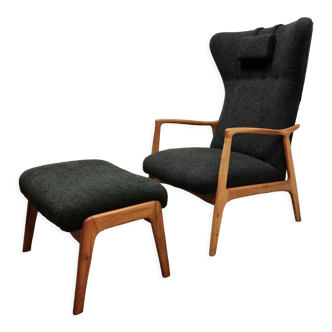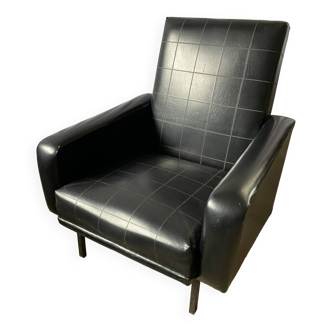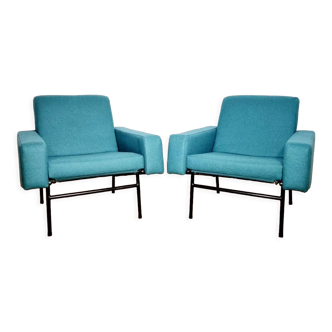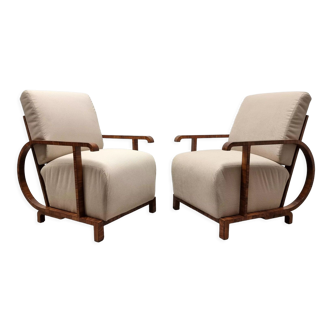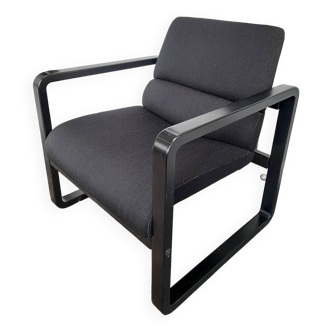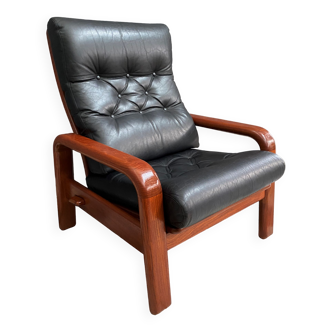"joker" pair of armchairs / lounge chairs 60s, Olivier Mourgue for Airborne
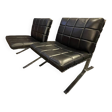
- Designer :
- Mourgue, Olivier
- Dimensions :
- H70 x W60 x D70
- Color :
- black
- Material :
- leather
- Style :
- design
Pair of lounge chairs, "Joker" model by Olivier Mourgue, Airborne edition, ca 1960s. Chromed steel blade structure, flexible suspended seat, black leatherette cushions (original). All in superb original condition: near new, patinated but unscratched leatherette, upholstery foam still in very good condition and not worn, unpitted chromed steel. These models were designed to accommodate armrests, so there are logically holes from the vice threads on the legs (not visible from the front when the backs are present). Stable and very comfortable. Similar model but smaller than the "Barcelona" model by Mies van de Rohe... Biography: Olivier Mourgue is a French designer and professor of fine arts, born in 1939 in Paris. Since 1960, he has worked closely with the furniture publisher Airborne, to whom he had presented his Joker seat the previous year. In 1963, he designed the pop and futuristic Djinn collection, which included a fireside chair, pouf, seats or a duo sofa, a chaise longue and a table. These models, dressed in vermilion red, equipped the space station in Stanley Kubrick's film 2001: A Space Odyssey, filming of which began in December 1965. The Tric-Trac armchair (1963) was only produced in a few copies due to its complexity and the resulting manufacturing constraints. The Whist back-to-back seat (1964), a contemporary version of the Boudeuse, also designed for Airborne, was successful for equipping public places such as airport lobbies and waiting rooms. Then came the Bouloum model (1964)... Installed in 1966 in his own workshop in Paris (until the end of the 1980s), the designer approached the lighting editor Disderot while continuing to create seats for Airborne, Renault, Prisunic and Mobilier National. In 1976, he established his workshop in Brittany and was appointed professor at the Brest School of Fine Arts.
4.5 ()





























